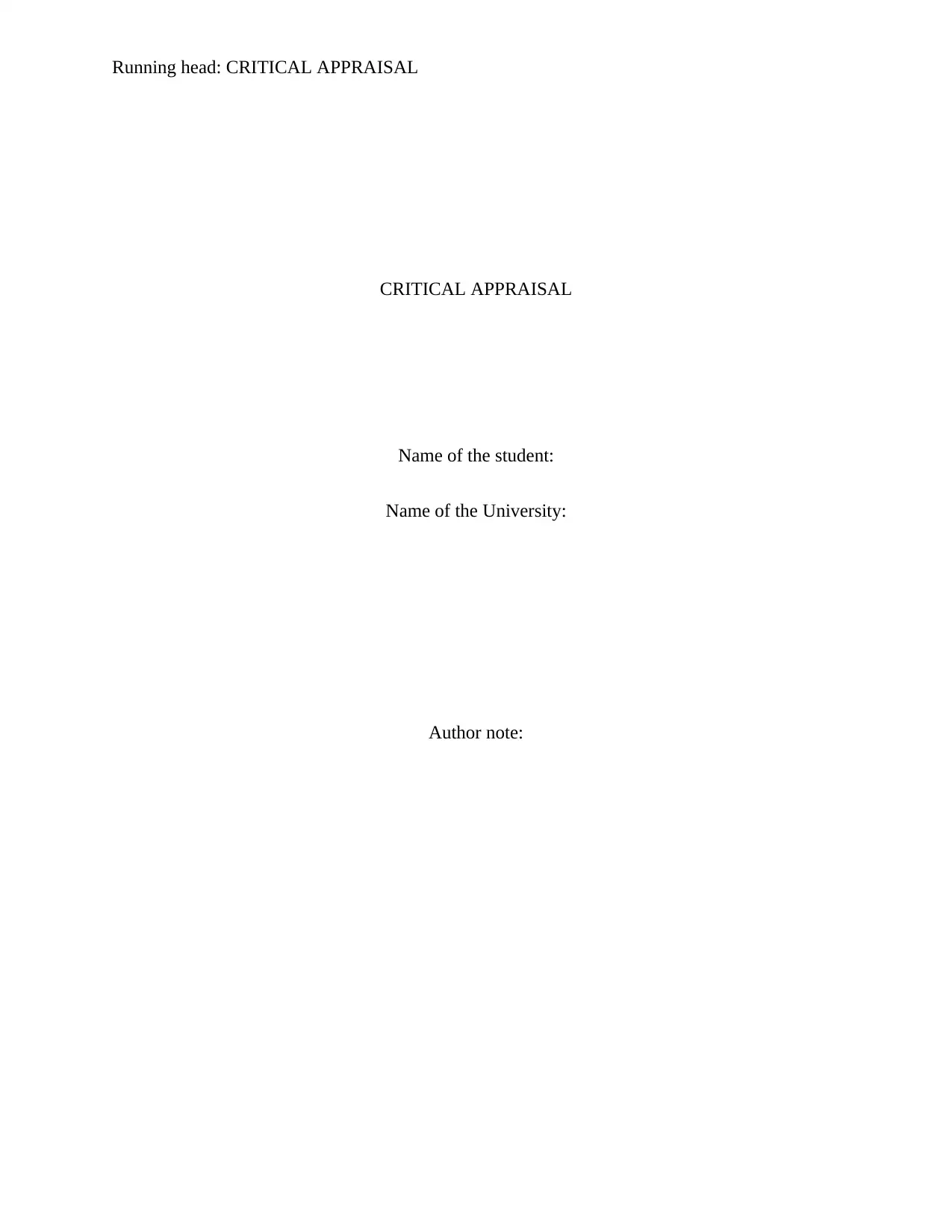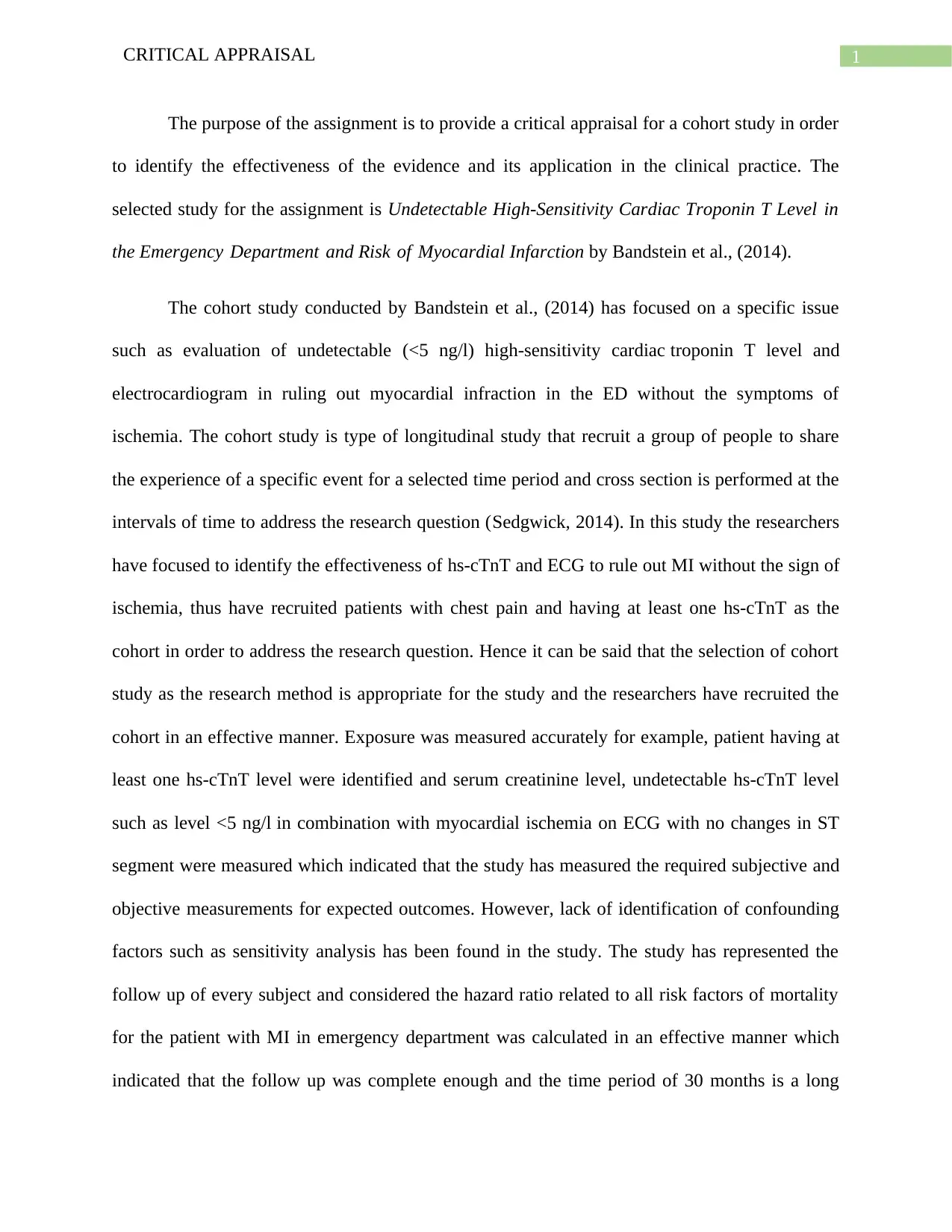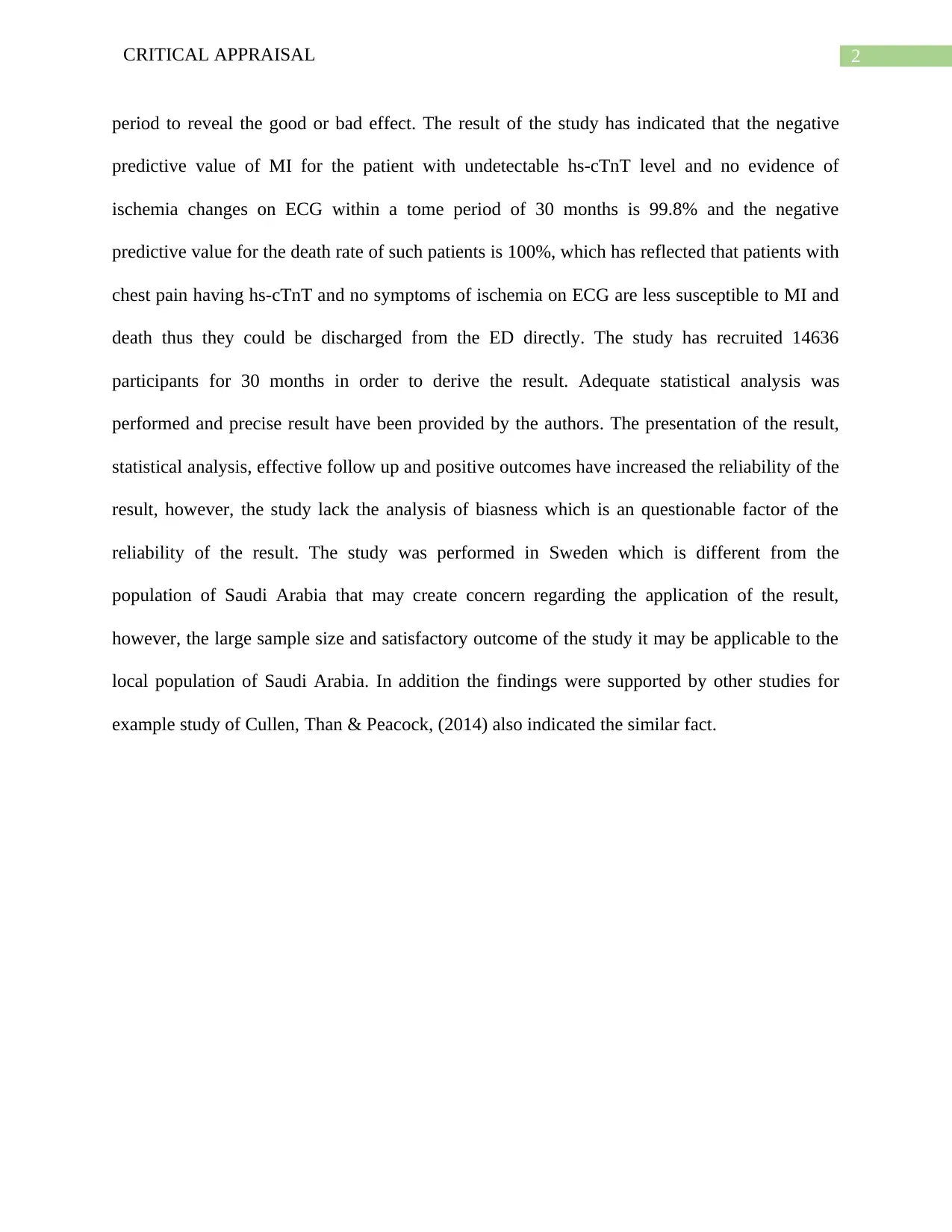University Report: Critical Appraisal of a Cohort Study
VerifiedAdded on 2023/06/03
|4
|782
|73
Report
AI Summary
This report presents a critical appraisal of the cohort study by Bandstein et al. (2014), which investigated the use of undetectable high-sensitivity cardiac troponin T (hs-cTnT) levels and electrocardiograms (ECG) to rule out myocardial infarction (MI) in the emergency department (ED). The study's methodology, including the selection of a cohort study design, accurate exposure measurement, and a 30-month follow-up period, is evaluated. The report highlights the study's findings, such as the high negative predictive values for MI and mortality in patients with specific hs-cTnT and ECG results. While the study's statistical analysis, presentation of results, and large sample size are noted as strengths, the lack of bias analysis is identified as a limitation. The report also discusses the applicability of the study's findings to different populations and references supporting studies. The critical appraisal is based on the CASP framework, assessing the validity, results, and local applicability of the cohort study.
1 out of 4






![[object Object]](/_next/static/media/star-bottom.7253800d.svg)